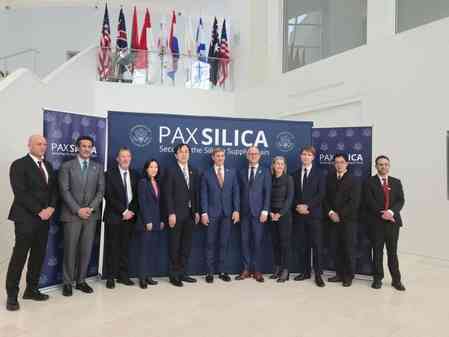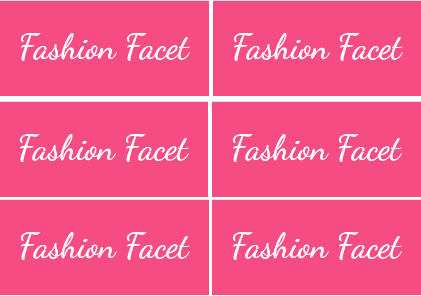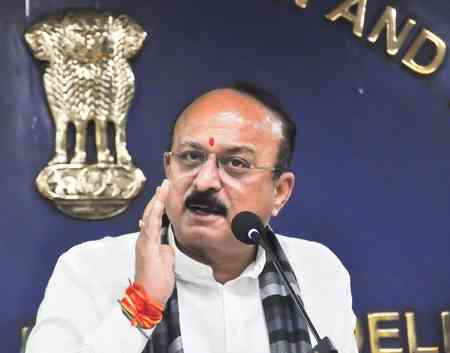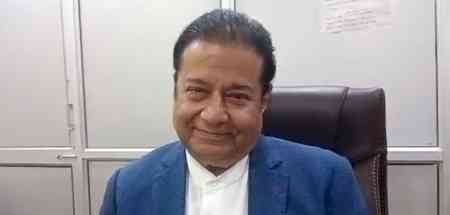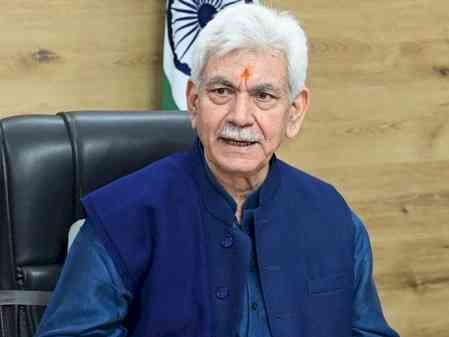The Third Eye: India is global leader in Artificial Intelligence
India remains on the forefront of the drive to ensure that Artificial Intelligence (AI) was transparent, oriented to public good and governed by international regulations. As the Lead Chair of the Global Partnership on AI (GPAI), India organised the Global India AI Summit in Delhi in July 2024 which focused on key pillars of AI eco-system including Computer Capacity, Data Sets, Application Development, Start Up Financing and Safe and Trustworthy AI.

D.C. Pathak
New Delhi, Oct 26 (IANS) India remains on the forefront of the drive to ensure that Artificial Intelligence (AI) was transparent, oriented to public good and governed by international regulations. As the Lead Chair of the Global Partnership on AI (GPAI), India organised the Global India AI Summit in Delhi in July 2024 which focused on key pillars of AI eco-system including Computer Capacity, Data Sets, Application Development, Start Up Financing and Safe and Trustworthy AI.
India will now host the AI Impact Summit in Delhi in February next year where the theme will be ‘the harnessing of AI for addressing real-world challenges’ such as health care, education, agriculture, climate change and governance. Prime Minister Modi has taken a personal interest in promoting advancement of AI -he had foreseen the transformative role of AI for humanity. He has already earned the credit for putting India on the world map of ‘digitisation’.
Meanwhile, India has moved ahead with measures to fight misuse of AI on social media for producing deepfakes, videos with synthetic voices and manipulated images and tightened IT Rules 2021 in this regard. On October 21 the Centre released amendments to the Rules and invited public feedback on the same within a fortnight. This is a timely step considering the fact that a perceived unfair government control on social media was known to have evoked strong protests from youth in many areas in India’s neighbourhood.
The Ministry of Electronics and Information Technology (MeitY) in its official notice said that ‘with the increasing availability of generative AI tools and the resulting proliferation of synthetically generated information(commonly known as deepfakes) the potential for misuse of such technologies to cause user harm, spread misinformation, manipulate elections or impersonate individuals, has grown significantly’ and added that it is on ‘recognising these risks and following extensive public discussions and parliamentary discussions’ that MeitY had drawn up the amendments.
The framework of amended rules enjoins on the companies offering AI generation tools to embed permanent visible watermarks or metadata identifiers on all synthetic content prescribing coverage of at least 10 percent of the display area of images and videos. Likewise, audio content must carry identifiers during the first 10 percent of playback duration. The amendments formally set out to define -for the first time- a ‘synthetically generated information’ as content ‘ artificially or algorithmically created, generated, modified or altered using a computer resource in a manner that makes it appear as authentic or true’.
Significant social media intermediaries- large platforms designated under the IT Rules- will be prohibited from enabling users to suppress or remove the identifiers making it harder to disguise the origin of AI generated material. The platform is obligated to ask the users to declare whether uploaded content is synthetically generated before publication and deploy automated detection systems to verify such declarations. The rules, of course, apply only to publically available content and not to private or unpublished material.
In a further move the government has brought all digital services that use mobile numbers-from WhatsApp and payment apps to food delivery platforms-under telecom cybersecurity regulations and empowered the concerned authorities to order suspension of user accounts across multiple services. The Telecommunications(Telecom Cyber Security) Amendment Rules notified on October 22, establish a government-run mobile number verification(MNV) system and mandate database checks before buying or selling used phones.
They are meant to deal with the cybercrime surge based on stolen or forged mobile connections. MNV platform-the centrepiece of the new rules- will verify whether phone numbers provided by users corresponded to legitimate telecom subscribers.
The government seeks to bring AI-generated material under the same due diligence and takedown obligations that currently apply to unlawful online information. MeitY says the rules aimed at promoting user awareness, enhancing traceability and ensuring accountability while maintaining an ‘enabling environment for innovation in AI-driven technologies’. A new provision clarifies that platforms removing synthetic content through grievance redressal mechanisms will retain their legal protection from liability over such content.
The government has introduced new procedural safeguards into the content takedown rules restricting the power to senior officers. The rules limit content removal powers to officials at Joint Secretary rank and above and Deputy Inspector General or higher in Police. Previously even junior officials sometimes of rank as low as Section Officer could send removal notifications. Further, all notifications must now include specific legal basis, statutory provisions and detailed reasoning. A Secretary-level officer will review all orders on a monthly basis to ensure ‘necessity and proportionality’. It maybe mentioned that Social Media Platform X had recently challenged the government arguing that ‘thousands of officials were allowed to issue arbitrary orders without judicial oversight’.
The tightening of rules for online content removal is prima facie a good move as it compels serious application of mind at a senior level before sending an order to the intermediary. The order will have to define the legal basis and statutory provision being invoked, the nature of the unlawful act and the electronic location of the content. India has taken this initiative at a time when potential misuse of AI is attracting attention world-wide. The European Union’s AI Act to come into effect in 2026 mandates labelling for ‘synthetic audio,image, video or text content’. China’s labelling measures which came into force recently were even more detailed and strict. The Indian approach is to address concerns of misinformation, false political narratives and deepfakes without discouraging innovation and creative expression.
A balance between regulatory penalties under the IT Act and the safe harbour provisions for intermediaries, has been attempted by MeitY and this is a welcome step. India leads the world in adoption of AI applications and MeitY has taken a timely initiative to help the AI - based economic advancement of the country. The new rules for strengthening telecom cyber security have also come not a day too soon as they ensure compliance with data protection laws and thus check the wide-spread malady of data theft.
(The writer is a former Director Intelligence Bureau)
--IANS
dcpathak/rs


 IANS
IANS 

